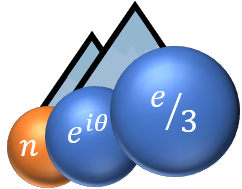The ground state of a graphene sheet at charge neutrality in a perpendicular magnetic field remains enigmatic, with various experiments supporting canted antiferromagnetic, bond ordered, and even charge density wave phases. A promising avenue to elucidate the nature of this state is to sandwich it between regions of different filling factors, and study spin-dependent tunneling across the edge modes at the interfaces. Here we report on tunnel transport through a ν = 0 region in a graphite-gated, hexagonal boron nitride (hBN) encapsulated monolayer graphene device, with the ν = 0 strip sandwiched by spin-polarized ν = ±1 quantum Hall states. We observe finite tunneling (t ∼ 0.3 − 0.6) between the ν = ±1 edges at not too small magnetic fields (B > 3T) and low tunnel bias voltage (< 30 − 60µV ), which is surprising because electrons at the edge states nominally have opposite spins. Hartree-Fock calculations explain these phenomena as being driven by the formation of a CAF order parameter in the ν = 0 region at zero bias (for wide enough junctions) leading to non-orthogonal spins at the edges. Remarkably, this tunneling can be controllably switched off by increasing bias; bias voltage leads to a pileup of charge at the junction, leading to a collapse of the CAF order and a suppression of the tunneling.
|
|
|
|
Electrically switchable tunneling across a graphene pn junction: evidence for canted antiferromagnetic phase in ν = 0 state
1 : Indian Institute of Science
2 : National Institute for Materials Science
3 : Department of Physics, The Pennsylvania State University
4 : Department of Physics and Astronomy, University of Kentucky, Lexington, Kentucky 40506,
|

 PDF version
PDF version
